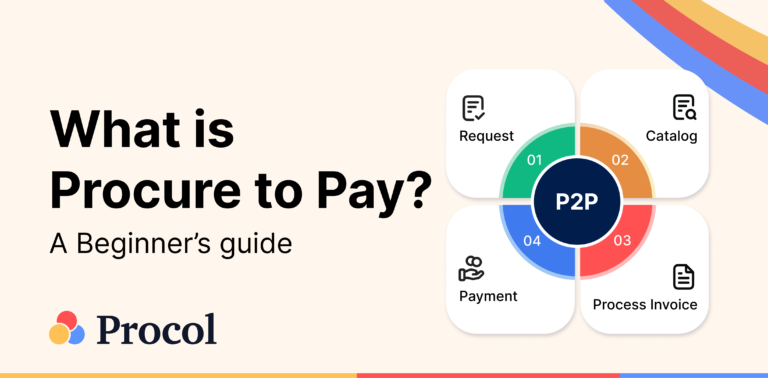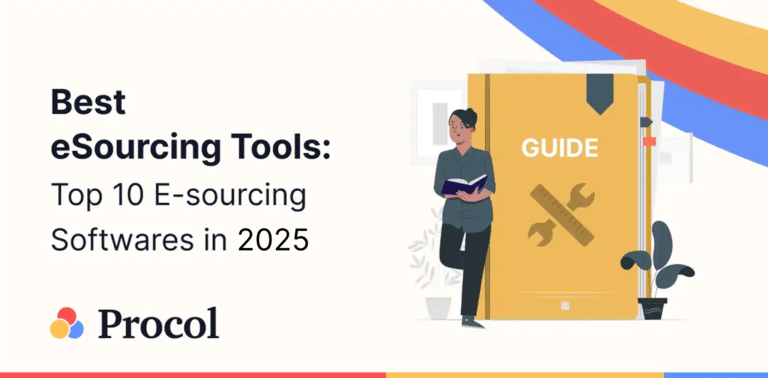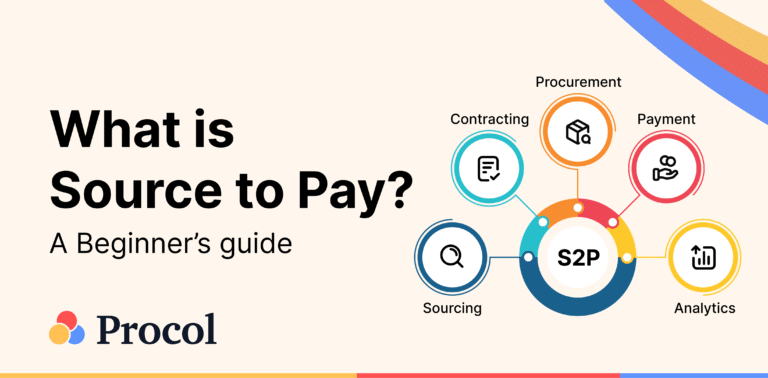Procol • April 15, 2025
A Comprehensive Guide to the Vendor and Supplier Onboarding Process

Introduction
Vendors are essential to operating a business. They are the foundation of any company, so selecting and onboarding the correct vendors is essential to its success.
While hiring new vendors, vendor onboarding is the first step in creating a lasting relationship with your suppliers. Effective supplier onboarding promotes collaboration and greatly reduces the risks related to operational inefficiencies and compliance.
Understanding supplier/vendor onboarding to achieve greater efficiency helps streamline the procurement process and build stronger, more reliable supply chains.
Let’s explore the vendor onboarding process and supplier onboarding strategies in more depth.
What is Supplier Onboarding or Vendor Onboarding?
Integrating new vendors into a company’s supply chain network and procurement processes is called vendor or supplier onboarding. This process requires several steps to gather and validate vendor data, guarantee compliance, and control risks. All of which provide the foundation for a fruitful and safe business partnership. After a vendor is chosen, the vendor onboarding process usually follows a rigorous bidding and due diligence step. This process entails gathering paperwork, including insurance certificates, non-disclosure agreements (NDAs), and certifications, to verify compliance and efficiently manage risks.
The following are the primary elements of the vendor onboarding process for suppliers:
1. Developing a Vendor Profile:
Businesses must give each vendor a thorough profile using their supplier management platform. This profile includes crucial details that specify the vendor’s obligations within the supply chain.
2. Workflow Integration:
The organization presents its unique workflows to vendors, encompassing all aspects of the contract lifecycle, from billing and fulfilment to vendor payment procedures. This stage is essential to guarantee seamless operational procedures and alignment with expectations.
3. Risk and Compliance Management:
Companies look for the possible risks that are connected to onboarding new vendors and ensure that all rules and regulations are followed. This entails telling suppliers about the business’s unique requirements, procedures, and standards, especially data security and sustainable procurement.
4. Documentation and Training:
The appropriate materials and training are provided to acquaint vendors with the company’s procedures, policies, and compliance requirements. This ensures that the company’s providers are ready to satisfy its expectations and contribute to the supply chain.
What is the Need for a Supplier Onboarding Process?
A good business needs to maintain relationships with customers and suppliers. Vendor onboarding process not only strengthens your business relationships, but it will also help your organization to:
- Reduce risks.
- Ensure compliance with regulations.
- Increased efficiency.
- Decrease redundancies.
- Automate tasks.
- Increase Business ROI.
- Reduce time to approve and onboard new suppliers.
- Reduction in human error.
- Improves quality and performance
7 Essential Supplier Onboarding Process Steps
By implementing these procedures, companies can improve efficiency and establish robust, compliant vendor partnerships while streamlining their supplier onboarding procedures.
1. Make a procurement policy:
Provide plans for managing and interacting with vendors. This fundamental step guarantees transparency and consistency in all procurement actions.
2. Determine and Assess Possible Suppliers:
To find possible vendors, undertake extensive research. Examine them according to criteria such as cost, conditions, and adherence to industry norms.
3. Supplier Approval and Completion of Onboarding Forms:
Following the identification of a vendor and the opening of a purchase order, the supplier fills out an onboarding form with their contact information, financial information, and business details.
4. Examine and incorporate into the ERP system:
The finance team checks the supplier’s onboarding form for completeness. This frequently thorough inspection checks more than fifty data fields. After confirmation, the data is incorporated.
5. Contract Finalization:
Negotiations over pricing, delivery dates, and other contractual parameters must be concluded to guarantee mutual understanding and agreement.
6. Gather and Focus on Details about the Supplier:
Collect all the information you need on your suppliers, such as their banking information and contact details, so that it can be centrally stored and managed efficiently.
7. Set Up Vendor Performance Reviews:
Establish a method for routinely evaluating vendors’ performance to ensure they adhere to the requirements and positively contribute to the company.
Challenges in the Supplier Onboarding Process for a Business
Supplier onboarding is a critical process in procurement, often complicated in large-scale companies where diverse teams work to onboard necessary services and suppliers. This complexity can lead to delays, increased costs, and compliance risks, presenting several vital challenges.
These difficulties show how the supplier onboarding process must be optimized, and solutions must be used to lower costs, increase efficiency, and minimize hazards.
- Manual Document Collection: Vendor management or accounts payable teams face significant hurdles when gathering supplier documents. This includes sending emails to collect documents manually, reminding suppliers to respond and make corrections, asking for the correct set of documents based on the supplier’s legal entity (such as tax forms, insurance certificates, and financial statements), verifying if the correct document has been submitted, and collaborating with the supplier’s internal team for required documents.
- Compliance and Risk Management: Managing compliance and risk is particularly challenging due to diverse regulatory frameworks, resource constraints, and continuous changes. Critical questions include whether bank validations and checks are part of the initial vetting process, if contractors and traditional suppliers undergo different vetting processes, whether secure channels are used for sensitive information exchange, and if it is possible to categorize suppliers into labels like strategic or preferred.
- Data Duplication, Silos, and Integration Problems: Information is dispersed throughout several systems and divisions, leading to data silos and duplicate supplier records in many firms. This lack of connection makes the vendor onboarding process more difficult since data must be manually uploaded and validated, which raises the possibility of mistakes and delays.
- Communication Gaps: Communication between an organization and suppliers is essential during the onboarding process. However, miscommunications or delayed responses may lead to misunderstandings, process delays, or even dissatisfaction.
- Lack of Transparency and Visibility: Transparency and visibility are crucial elements as they can make or break the supplier onboarding process. A centralized system provides clear visibility into each supplier’s status, reducing delays and missed deadlines and ensuring a smooth onboarding process.
What is the Significance of an Effective Supplier Onboarding Process?
An efficient supplier onboarding process is pivotal in streamlining procurement and minimizing third-party risks, which is crucial for maintaining competitive and agile operations in a rapidly changing market.
By creating a solid procurement policy, businesses can improve vendor management and guarantee uniform procurement procedures throughout departments. This fundamental stage is essential for developing solid ties with suppliers, enhancing the results of negotiations, and eventually increasing procurement performance.
Integrating technology into the onboarding procedure further increases efficiency. Supplier onboarding software can automate regular operations like gathering documentation, performing preliminary evaluations, and arranging vendor payments. This guarantees that all parties fulfil necessary standards and deadlines while streamlining the process and enhancing communication and cooperation between companies and suppliers.
Standardizing information and processes is also crucial for risk management and organizational effectiveness in supplier onboarding. Thus, prioritizing an efficient supplier onboarding process secures a company against potential risks and enhances overall operational health, leading to sustained profitability and growth.
Vendor Onboarding Checklist
The process of integrating new suppliers into your business operations may be made organized and effective with the help of an appropriate vendor onboarding checklist. This checklist helps onboard vendors efficiently, ensures compliance, and fosters robust, risk-managed supplier relationships. Here is a thorough checklist to help you with every step:
1. Evaluate the Business Case for Contracting Out:
Start by comparing the advantages and disadvantages of using a vendor vs keeping the function in-house. Analyze the costs and benefits and classify the vendor as significant, high-risk, or critical. Form a purchasing committee with important stakeholders and record the essential features and functionalities.
2. Determine Possible Suppliers:
To begin your investigation, seek suppliers currently offering services in the sector. Speak with colleagues in the field, look through vendor listings from associations, post recommendations on message boards, and compare vendors on websites like G2 and Capterra. Document your research thoroughly.
3. Submit a Request for Proposal (RFP):
Draft a proposal, quote, or request for information to obtain precise information relevant to your company’s needs. Arrange demonstrations and interviews and obtain quotations from possible suppliers.
4. Evaluate the Vendors:
Use a vendor evaluation scorecard to assess vendors and determine which one best fits your strategic needs, risk tolerance, and financial constraints. Create a service-level agreement and review the vendor options and details with the buying committee.
5. Conduct Due Diligence:
Perform thorough due diligence on your selected vendor. Review general company information such as articles of incorporation, company structure, and references. Examine financial documents like annual reports and tax documents. Assess the vendor’s reputation, insurance policies, IT security measures, and compliance policies.
6. Negotiate the Contract:
Review the contract to ensure it covers all aspects in writing, including performance standards, regular access to reports and audits, data privacy protection, complaint resolution, business resiliency, and continuity planning. Include data ownership, intellectual property provisions, default, termination, and dispute resolution.
7. Begin Implementation:
Align with the vendor on the implementation process and timing. Develop an implementation plan, identify critical milestones, and schedule employee training.
8. Conduct Routine Monitoring:
Conduct ongoing due diligence to identify issues or emerging risks. Create a vendor review schedule and set up news alerts for continuous monitoring.
Vendor Onboarding Best Practices for an Effective Supplier Relationship
Vendor onboarding is important to maintain effective supplier relationships. Check out some of the practices to ensure a successful vendor onboarding process:
- Standardize the Process: Create a uniform vendor onboarding checklist and develop form templates. This standardization helps manage multiple vendor onboarding simultaneously, ensuring consistency and efficiency.
- Be Adaptable and Flexible: Every vendor is different, even if standardization is crucial. The process can be more effective overall by being flexible enough to meet the unique requirements of various vendors.
- Clear Communication: Establish unambiguous channels of communication from the outset. A successful relationship requires regular communication and open dialogue about objectives, issues, and expectations.
- Leverage Technology: Use technology to expedite the supplier onboarding process. Tools like digital platforms, automated data collection, and vendor management systems can significantly decrease the time and effort required.
- Extensive Due Diligence: Conduct in-depth reviews to ensure the vendor can fulfil your business needs and comply with industry regulations. This minimizes future risks and ensures quality service.
- Regular Reviews and Optimization: Evaluate and improve the onboarding procedure regularly. Periodic assessments and regular stakeholder feedback can assist in pinpointing areas that require improvement and enabling necessary process updates.
- Give an Owner a Name: A single point of contact should be assigned to oversee the onboarding procedure. This person should guide the vendor through various stages and address any issues.
- Make Connections: Throughout the vendor onboarding process, promote the development of relationships. Developing a network of vendors can result in more cooperative and successful collaborations.
- Encourage Vendor Input: Talk to vendors about innovations and enhancements. Their knowledge can offer insightful information that improves the company partnership and the onboarding procedure.
- Automate Where Possible: When feasible, automate. Time-consuming procedures should be automated in the onboarding procedure. Automation can save time and decrease mistakes, increasing process efficiency.
- Legal and Compliance Checks: Verify that every vendor complies with all applicable laws and regulations. Contracts, insurance, and data security procedures fall within this category.
- Continuous Improvement: Treat vendor onboarding as an evolving process. Regular updates in response to vendor input and evolving business requirements can result in more successful onboarding tactics.
By implementing these best practices, organizations may enhance vendor onboarding procedures, increase supplier relationships, and improve overall business outcomes.
How to Automate Supplier Onboarding?
Businesses are using automation more and more to automate supplier onboarding procedures. This reduces the time and effort required while improving accuracy and compliance. This is how they bring about this change:
Utilizing Advanced Software Solutions:
Companies like Procol integrate advanced onboarding software that replaces outdated manual systems. By facilitating smooth interaction with current ERP or P2P systems, this software speeds up the entire process and enables firms to onboard suppliers in minutes instead of months.
Digital and Automated Onboarding Platforms:
Suppliers can quickly enter their data into a vendor onboarding platform offered by platforms. This immediately guarantees data correctness and compliance and removes the need for human data entry.
Workflows that can be customized:
Companies may ensure that they gather only pertinent information unique to each supplier by tailoring onboarding workflows. This expedites the process and fosters a good working relationship with suppliers.
Simplifying Documentation:
Suppliers can upload required papers via a centralized site thanks to automation systems that streamline the documentation process. This helps retain a single version of supplier data for simple tracking and analysis and expedites the process.
Automated Invoicing and Payments:
Automating invoicing procedures reduces manual labor and guarantees on-time payments. It also ensures that payments are executed automatically after work is completed.
Self-Service Supplier Portals:
By enabling suppliers to control their data and documentation, self-service portals lessen the administrative burden on purchasing organizations and boost the effectiveness of the onboarding procedure.
Integration with Business Processes:
Organizations can automate several phases of the supplier onboarding process by utilizing Business Process Management (BPM) and Robotic Process Automation (RPA). These technologies facilitate a faster process through suppliers’ swift and effective integration into company systems.
By implementing these automated techniques, companies may improve the overall efficiency and compliance of their supply chains while reducing the time and resources needed for supplier onboarding.
How can Procol Facilitate your Supplier Onboarding Process?
Procol’s cutting-edge software solutions revolutionize the supplier onboarding process, increasing its effectiveness and efficiency for companies in various industries. Procol streamlines and expedites every stage of supplier management—from first contact to complete integration into the business’s operations—by incorporating cutting-edge technology. Here are the key ways Procol streamlines the supplier onboarding process:
Digital Onboarding and Management
Procol provides a digital platform that allows companies to instantly onboard suppliers with a streamlined process. This platform supports the management of lifecycle data and performance metrics online, ensuring robust supply chain health and operational agility.
Automation of Key Processes
With features like automated onboarding sheets, supplier creation, and validation, Procol significantly reduces the manual workload. The platform’s capability to handle end-to-end vendor management processes, including audits and compliance checks, further enhances efficiency.
Customizable Workflows and Integration
Procol supports customized automation for efficient decision-making through streamlined approval workflows. Additionally, it provides a smooth connection with current ERP systems, streamlining procurement procedures and guaranteeing uniformity between corporate divisions.
Improved Vendor Relationships and Compliance
Procol assists in finding new vendors, assessing them, and effectively handling contracts and discussions. The platform fosters long-term business benefits and solid vendor relationships, ensuring all vendors satisfy compliance standards and company requirements.
Entire Analytics and Reporting
The platform offers firms insightful insights into the procurement process through its efficient reporting and analytics, enabling them to make well-informed decisions. Users of Procol’s next-generation platform have claimed significant time and financial savings, as well as significant cost and operational reductions.
Conclusion
A business depends upon its vendor to help it prove quality products/services on a flexible timeline, ensuring cost-effectiveness. This can be done by maintaining a relationship with suppliers. Thus, supplier onboarding processes increase productivity, lower expenses, and enhance supplier relationships.
Vendor onboarding process involves adding new suppliers to your business, checking their data, and maintaining communication with them. This process is now relatively easier with the help of vendor onboarding software, which makes the two-way supply chain management process efficient and less time-consuming.
Explore more from Procol
Discover expert tips, how-to guides, industry insights, and the latest procurement trends.

What is Procure-to-pay (P2P)? An Ultimate Guide
Procure to pay is the process from procurement of materials needed...

Best eSourcing Tools: Top 10 eSourcing Software in 2025
Discover top 10 e-sourcing tools and esourcing platforms necessary for efficient...

What is Source-to-pay in 2025? An Ultimate Guide
Source to pay is the process of sourcing vendors to procure...



















